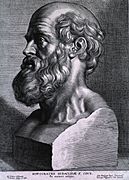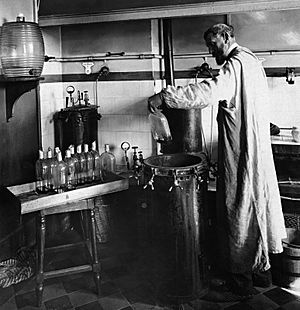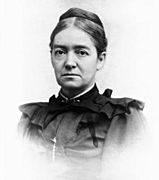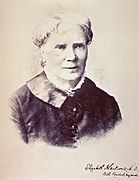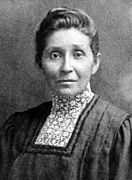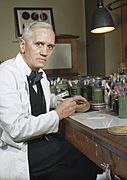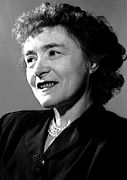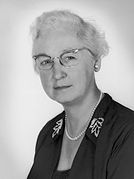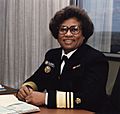History of medicine facts for kids
The history of medicine is the story of how people have tried to understand and treat sickness, injuries, and health over many, many years. It's not just about doctors and hospitals, but also about how societies, beliefs, and even politics have shaped how we care for ourselves. Historians look at old writings, tools, and even bones to learn about health practices from long ago, from prehistoric times to today.
Early medical traditions came from places like Babylon, China, Egypt, and India. Over time, our understanding of the human body and diseases grew. For example, the invention of the microscope helped us see tiny things that cause illness. Before the 1800s, people often believed diseases were caused by an imbalance of "humors" in the body. But then, the germ theory of disease showed that tiny germs cause many sicknesses, leading to better treatments and cures.
Doctors in wars learned new ways to treat injuries and perform surgery. As cities grew, people realized the importance of public health and keeping places clean. In the 1900s, new treatments like antibiotics changed medicine forever. Medicine also became more professional, and new jobs opened up for women, like nurses and doctors.
Ancient Medicine
Ancient history covers the time from about 3000 BCE to 500 CE. During this long period, different societies around the world developed their own ways of healing. Many believed that nature, religion, and humans were all connected, and that health depended on the balance of fluids or energy in the body.
Ancient Mesopotamian Medicine
The land of Mesopotamia (where countries like Iraq are today) was home to early civilizations like the Sumerians and Babylonians. Their healing practices mixed what we now call medicine, science, magic, and religion.
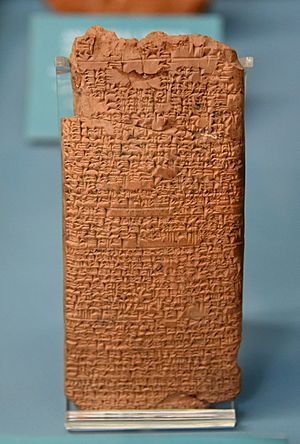
The Sumerians, who had one of the first writing systems, wrote on clay tablets about medicines, operations, and even ways to get rid of evil spirits. They had different types of healers, including seers, exorcists, and physician-priests. Later, the Babylonians wrote detailed medical books, like the Diagnostic Handbook. This book focused on figuring out what was wrong with a patient, predicting how they would get better, and suggesting treatments. They tried to understand diseases using both natural ideas and religious explanations.
Ancient Mesopotamians also worked on preventing diseases from spreading and knew about conditions like strokes and mental illnesses.
Ancient Egyptian Medicine
Ancient Egypt, along the Nile River, had a very advanced medical tradition. We know this from old documents written on papyrus, like the Edwin Smith Papyrus and the Ebers Papyrus.
The ancient Egyptians were known for being very healthy, partly because of their dry climate and good public health system. Each doctor often specialized in treating only one type of disease. While they sometimes used magic, they also developed practical skills in understanding the body, public health, and diagnosing illnesses.

The Edwin Smith Papyrus, from about 1600 BCE, is like an old textbook on surgery. It describes how to examine, diagnose, treat, and predict the outcome of many injuries, almost without using magic. The Kahun Gynaecological Papyrus, from 1800 BCE, is the oldest medical text of its kind, focusing on women's health.
Ancient Egypt also had some of the earliest known doctors. Hesy-Ra was a "Chief of Dentists and Physicians" around 2700 BCE. And Peseshet was one of the first known women doctors, called "Lady Overseer of the Lady Physicians."
Ancient Chinese Medicine
Medical practices in early China were greatly shaped by traditional Chinese medicine (TCM). This system developed over thousands of years, with early writings discussing herbs and their uses.
The main book of Chinese medicine is the Yellow Emperor's Inner Canon, written between the 5th and 3rd centuries BCE. It talks about how human experiences are connected to the natural world. Traditional Chinese medicine uses herbal remedies, acupuncture (using needles), massage, and other therapies.
Ancient Indian Medicine
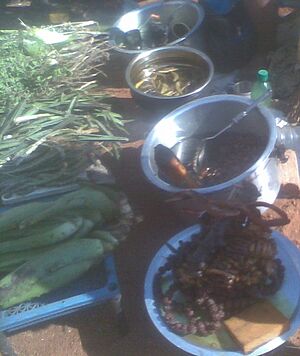
The Atharvaveda, an ancient Indian text, is one of the first to discuss medicine, including using herbs for different sicknesses. This later became a big part of Ayurveda, another medical system from India.
Ayurveda means "complete knowledge for long life." Its most famous books are by Charaka and Sushruta. They believed that health could be improved by human effort. These books describe how to examine, diagnose, treat, and predict the outcome of many illnesses. The Sushruta Samhita is especially famous for describing different types of surgery, including rhinoplasty (nose surgery) and cataract surgery. Sushruta even described over 125 surgical tools!
Ayurveda covered eight main areas of medicine, from internal medicine to surgery, pediatrics, and even toxicology. Students learned these subjects along with practical skills like distillation and metallurgy.
Another medical system in India was Unani medicine, which became popular later. It's similar to Ayurveda, based on the idea that elements like fire, water, earth, and air are in the human body. Health comes from a balance of these elements.
Ancient Greek Medicine
The ancient Greeks had a big impact on Western medicine. One important idea was the theory of "humors," or bodily fluids.
Humors The theory of humors, made famous by the Greek doctor Galen (around 129–216 CE), said that there were four main fluids in the body: blood, phlegm, yellow bile, and black bile. People believed that if these humors were out of balance, you would get sick. For example, too much blood might lead to a doctor performing bloodletting (removing some blood). This idea was popular for a very long time.
People

Temples dedicated to the healing god Asclepius, called Asclepieia, were places where people went for medical advice and healing. Patients would sleep there, hoping the god would guide them in a dream or cure them through surgery.
Hippocrates of Kos (around 460–370 BCE) is often called the "father of modern medicine." He and his students wrote many medical works, including the famous Hippocratic Oath that doctors still take today. They were among the first to describe many diseases and medical conditions. Hippocrates also started classifying illnesses as `acute` (sudden and severe) or `chronic` (long-lasting).
Galen (around 129–216 CE) was another very important Greek physician. His ideas about the body and blood circulation were believed for nearly 1500 years. He did many experiments and dissections on animals to learn about organs. He even performed brain and eye surgeries! Galen believed that blood circulated through the body and that the heart was very important.
-
Hippocrates (around 460 - 370 BCE). Known as the "father of medicine".
-
Galen (129 - 216 CE). Known for his deep understanding of anatomy.
Two other important Greek doctors in Alexandria, Herophilus of Chalcedon and Erasistratus of Ceos, helped start the scientific study of anatomy (the body's structure) and physiology (how the body works). They were among the first to dissect human bodies, which was usually forbidden back then. They studied the brain, veins, and arteries, and understood that the brain was key to the nervous system.
Ancient Roman Medicine
The Romans invented many surgical instruments, including tools for women, forceps, scalpels, and surgical needles. They even performed cataract surgery.
The Roman army doctor Pedanius Dioscorides (around 40–90 CE) wrote a huge encyclopedia called De Materia Medica, describing over 600 herbal cures. This book was used for 1,500 years!
Post-classical Medicine
After 400 CE, medicine in Western Europe faced challenges, but medical knowledge was kept alive and advanced in other parts of the world, especially in the Middle East.
Middle East
Byzantine Medicine Byzantine medicine (from the Byzantine Empire, around 400 CE to 1453 CE) built on the knowledge of the Greeks and Romans. Byzantine doctors wrote many medical textbooks, which included diagnostic explanations and drawings. Their work helped influence Islamic medicine and later, the rebirth of medicine in Europe.
Constantinople was a major center for medicine. The first known separation of conjoined twins happened in the Byzantine Empire in the 900s!
Islamic Medicine
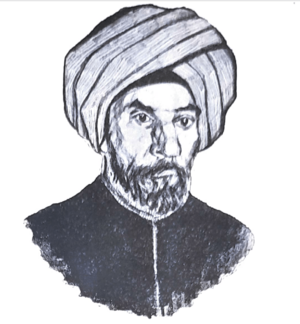
During the Islamic Golden Age (roughly 750-1258 CE), Islamic doctors made huge contributions to medicine. They were influenced by ancient Indian, Persian, Greek, and Roman ideas. Many Greek medical works were translated into Arabic, which was the main language of Islamic nations.
The first Islamic hospital was built in Baghdad in 805 CE. These hospitals were important for both treating patients and teaching new doctors. Famous Islamic physicians like Muhammad ibn Zakariya al-Razi and Avicenna wrote many books. Avicenna's The Canon of Medicine became a standard medical textbook in European universities for centuries. Al-Razi was one of the first to question the Greek humor theory and was a pioneer in pediatrics and ophthalmology (eye medicine).
Islamic scholars also played a huge role in developing the modern hospital system. They created hospitals with separate wards for men and women, pharmacies, and good record-keeping. They also focused on hygiene and sanitation long before these practices became common in Europe. Many of their ideas were later shared with Europe through translated medical texts.
Early Modern Medicine
The Renaissance in Europe brought a new focus on learning and discovery. Scientists began to translate Arabic and Greek medical works and started doing more experiments, especially dissections, to learn about human anatomy.
Europe
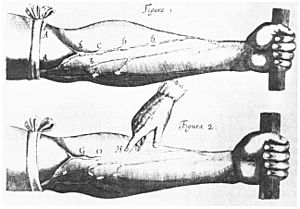
Important Discoveries
- Tiny Creatures: In 1677, Antonie van Leeuwenhoek saw tiny "animalcules" (which we now call microorganisms) through his microscope. This started the study of microbiology.
- Blood Circulation: In 1628, the English doctor William Harvey made a huge discovery: he correctly described how blood circulates throughout the body. Before this, people had different ideas about how blood moved.
Inventions
- Microscopes: The microscope, first used by Antonie van Leeuwenhoek in 1676 to see bacteria and other tiny life forms, opened up a whole new world for understanding diseases.
Medical Schools Universities like the University of Bologna and the University of Padua in Italy became important centers for medical training. They started doing human dissections, which helped doctors like Andreas Vesalius (1514-1564) create detailed maps of the human body. His book, De Humani Corporis Fabrica, was a major step forward in understanding anatomy.
Women in Medicine Catholic women, especially nuns, played a big role in health care in Europe by providing free nursing care for the poor in convents and hospitals. While Protestant reforms sometimes closed these institutions, women continued to provide essential medical services in other ways, working for parishes, hospitals, and private families.
Asia
China In the 1800s, Western medicine came to China through Christian missionaries. They set up clinics and medical colleges, like the one in Hong Kong that trained Sun Yat-sen, who later led the Chinese Revolution. Because of social customs, Chinese women were often uncomfortable being treated by male doctors. So, women doctors like Dr. Mary Hannah Fulton came to China and founded the first medical college for women in Guangzhou.
Japan After the 1860s, Japan eagerly adopted Western medicine, especially from the Dutch and Germans. Japanese doctors translated European medical texts and started using new methods like smallpox vaccinations. Kitasato Shibasaburō (1853–1931) studied in Germany and brought the study of bacteriology to Japan, even helping discover the cause of the plague. Japan also invested heavily in public health and sanitation, which greatly increased life expectancy.
Late Modern Medicine
The 19th and 20th centuries saw huge changes in medicine, driven by scientific discoveries and new ways of thinking about health.
Germ Theory and Bacteriology
For a long time, people thought diseases were caused by bad air or "miasmas." But in the 1800s, scientists started to prove the germ theory of disease.
- In 1847, Ignaz Semmelweis in Vienna showed that doctors washing their hands could dramatically reduce deaths from childbed fever. But many doctors didn't believe him.
- French scientist Louis Pasteur confirmed that tiny living organisms (microorganisms) caused fermentation and suggested they could also cause diseases.
- German doctor Robert Koch took this further. He identified the specific bacteria that caused deadly diseases like anthrax and tuberculosis. Koch's work proved the germ theory and earned him a Nobel Prize. His "Koch's postulates" became important steps to confirm what causes a disease.
Pasteur also developed the first vaccine for humans since Edward Jenner's smallpox vaccine: the rabies vaccine. His work led to the founding of the Pasteur Institute in Paris, the first biomedical research center.
Nursing
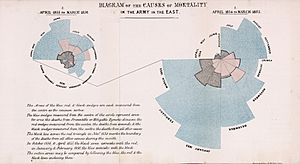
Florence Nightingale in England revolutionized nursing. She believed nurses needed better training. Her Nightingale Training School, opened in 1860, became a model for nursing schools worldwide. Nursing became a respected profession for women, often supported by upper-class women and royalty. In the United States, nursing schools became part of large hospitals, providing dedicated care. The International Red Cross also promoted nursing globally.
Statistical Methods
A big step in understanding how diseases spread came from using statistics, maps, and graphs. John Snow in London, for example, used maps to show that a cholera outbreak was linked to a specific water pump, leading to its removal and a drop in deaths. Florence Nightingale also used statistics to show how improving hospital conditions could save lives during the Crimean War.
Later, mathematicians developed tools to analyze large amounts of data, which helped medical research become even more advanced.
Psychiatry
Before the 1800s, people with mental illnesses were mostly cared for by their families. But then, new ideas emerged that mental illness could be treated in special hospitals called asylums. Doctors like Philippe Pinel in France advocated for more humane "moral treatment."
However, asylums often became overcrowded. In the 1930s, some controversial treatments like inducing seizures or cutting parts of the brain (lobotomy) were introduced. In the 1950s, new psychiatric drugs were developed, which helped many but also had side effects. There was also a movement to help people with mental illness live in their communities rather than in large hospitals.
Cardiovascular Health
Blood Groups In 1901, Karl Landsteiner discovered the ABO blood group system, which explains why some people's blood can't mix. This was a huge step for safe blood transfusions. He later helped discover the Rh factor in 1937.
Pacemakers In 1958, Arne Larsson in Sweden became the first patient to rely on an artificial cardiac pacemaker, a device that helps the heart beat regularly. He lived for many more years thanks to this invention.
Cancer Treatment
Treatments for cancer have advanced with radiotherapy (using radiation), chemotherapy (using drugs), and surgical oncology (removing tumors with surgery).
Diagnosis
X-ray imaging was the first type of medical imaging. Later, new methods like ultrasonic imaging, CT scanning, and MR scanning allowed doctors to see inside the body in amazing detail.
Disease Eradication
International efforts have led to the eradication of some infectious diseases. Smallpox, a deadly disease, was completely wiped out in the 1970s thanks to a global vaccination campaign. Rinderpest, a cattle disease, was also eradicated. Efforts are ongoing to eradicate polio.
Public Health
Public health measures became very important during the 1918 influenza pandemic, which killed millions worldwide. This pandemic showed how crucial it was to understand how diseases spread and to implement measures like hygiene and social distancing.
Surgery
Surgery has seen incredible advancements. In 1948, open-heart surgery became possible. Later in the 20th century, organ transplants like kidney, heart, and liver transplants became a reality. The first partial face transplant was done in 2005.
By the end of the 20th century, tiny robotic devices and fiber optics allowed for microsurgery and laparoscopic surgery, which are much less invasive than traditional surgery.
War and Medicine
Wars have often pushed medical advancements. During the American Civil War (1861–65), more soldiers died from disease than from battle. This led to better army hospitals and the creation of organizations like the United States Sanitary Commission to improve hygiene and care.
In World War I, the need to treat severe injuries led to improvements in prosthetic limbs and plastic surgery. During World War II, new medical technologies like active immunization (vaccines), sulfa drugs, and penicillin dramatically improved the chances of recovery for wounded soldiers. X-rays and electrocardiographs also became widely used.
Contemporary Medicine
The 21st century has brought new challenges and amazing innovations in medicine.
Antibiotics and Antibiotic Resistance
The discovery of penicillin by Alexander Fleming in the 20th century was a game-changer. Antibiotics became a powerful defense against bacterial infections, making complex surgeries and cancer treatments possible. However, using antibiotics too much has led to antibiotic-resistant bacteria, which are harder to treat.
Robotics
Robotics is playing a growing role in medicine. Surgical robots, like the Da Vinci Surgical System, help doctors perform minimally invasive surgeries with great precision.
Pandemics
The early 21st century has seen several global pandemics:
- The 2002–2004 SARS outbreak taught us important lessons about controlling viral infections, like better isolation and handwashing.
- The 2009 swine flu pandemic (H1N1) infected over 700 million people.
- The ongoing HIV pandemic, which started in 1981, has affected millions. New treatments like PrEP and PEP help reduce its spread, but finding a vaccine is still a goal.
- The COVID-19 pandemic, starting in 2019, caused massive global disruption, millions of infections, and deaths. It also showed how quickly the world can organize to distribute medical supplies and personnel.
Personalized Medicine
Personalized medicine is a new approach that aims to create diagnoses and treatments based on a person's unique characteristics, like their DNA. Innovations like gene therapy, stem cell therapy, and wireless health monitoring devices are helping doctors tailor treatments more precisely.
Telemedicine
Telemedicine, or remote healthcare, is also growing. Remote surgery, where a surgeon operates on a patient from a different location, is a groundbreaking example, like the transatlantic "Lindbergh operation" in 2001.
Themes in Medical History
Women in Medicine
Women have always been healers and midwives. However, as medicine became more professional, it was harder for women to become doctors. In the 1800s, Elizabeth Blackwell became the first woman to formally study and practice medicine in the United States. She and other pioneering women like Mary Putnam Jacobi and Susan La Flesche Picotte (the first Indigenous woman doctor in the U.S.) opened doors for women in the medical field. Florence Nightingale revolutionized nursing, making it a respected profession for women.
-
Mary Putnam Jacobi (1842-1906) helped debunk myths about women's health.
-
Florence Nightingale (1820-1910) reformed nursing.
-
Elizabeth Blackwell (1821-1910) was the first woman to earn a medical degree in the United States.
-
Susan La Flesche Picotte (1865-1915) was the first Indigenous woman to earn a medical degree in the United States.
-
Linda Richards (1841-1930) was a pioneer in nursing.
-
Alexander Fleming (1881-1955) discovered penicillin.
-
Gerty Cori (1896-1957) was the first woman to win a Nobel Prize in Physiology or Medicine.
-
Virginia Apgar (1909-1974) created the Apgar score to check newborn health.
Images for kids
-
Studies of Embryos by Leonardo da Vinci (1510-1513).
-
An operating theatre in New Zealand (1916).
-
Joycelyn Elders, the first Black American Surgeon General of the United States (1993-1994).
-
A modern emergency center in Henan, China.
-
A public outdoor Automated External Defibrillator (AED) (2022).
See also
 In Spanish: Historia de la medicina para niños
In Spanish: Historia de la medicina para niños
- History of hospitals
- History of nursing
- History of surgery
- Timeline of medicine and medical technology


